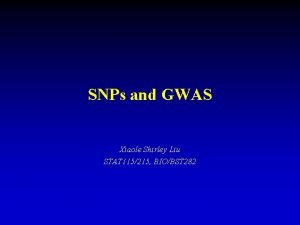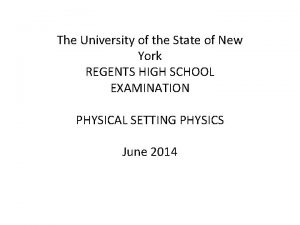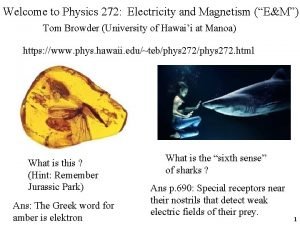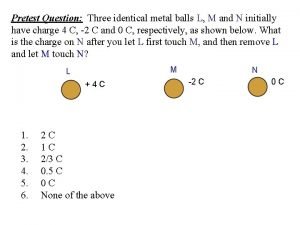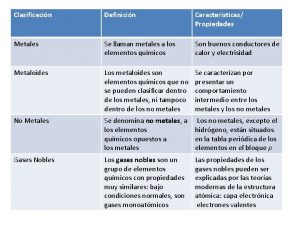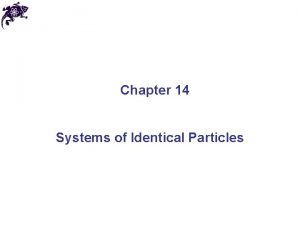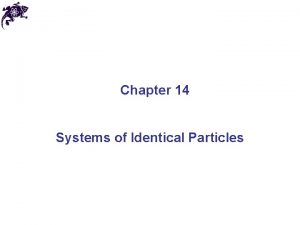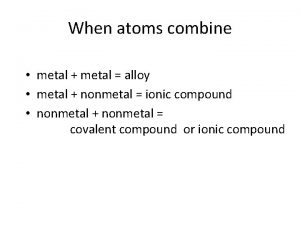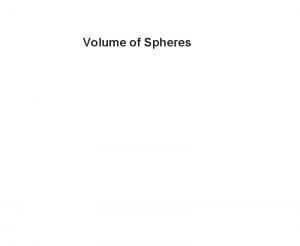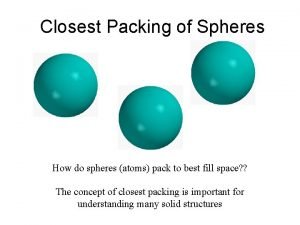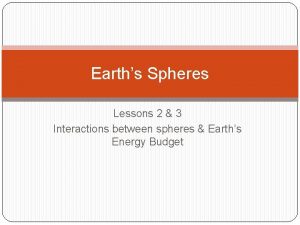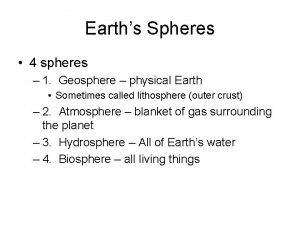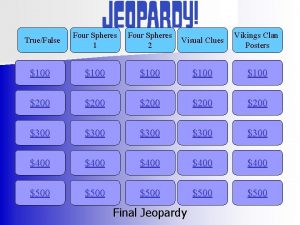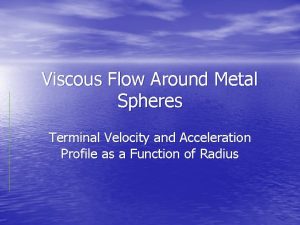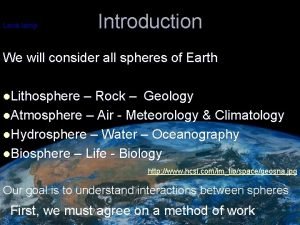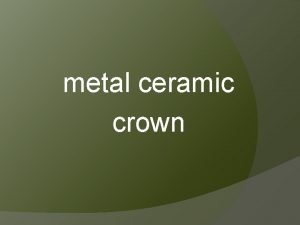1 Consider 2 identical metal spheres that are















- Slides: 15

1 Consider 2 identical metal spheres that are mounted on insulating stands. Sphere X has a charge -1 q, and sphere Y has a charge +4 q. The spheres are now touched together and then separated. a. Each is now charged, with a charge +1. 5 q b. Each is now charged, with a charge +2. 5 q c. Each is now charged, with a charge +3 q d. Sphere X has charge +4 q, sphere Y now has charge -1 q e. none of these

2 Electrical charge interaction can be summarized by: a. - charge repels other - charge. b. + charge repels other + charge. c. - charge and + charge attract each other. d. All of these. e. None of these.

3 Amy uses a piece of silk to rub a comb. The comb then becomes positively charged. This net positive charge accumulates because the comb – A. gains electrons – B. gains protons. – C. loses electrons. – D. loses protons.

4 The diagram shows the electric field lines between two electrical charges P and Q. Which of the following statements about the charges on P and Q is correct? • A. P is positive and Q is negative. • B. P is negative and Q is positive. • C. P and Q are both positive. • D. The electric field lines only show the intensity of the electric field but not the charges.

5 A child rubs a rubber ruler and then puts it near some tiny pieces of paper. The paper pieces are then attracted to the ruler. Which of the following statements best explains the result? – A. Paper is naturally a negative material. – B. Rubber and paper always attract each other. – C. The paper becomes charged by induction. – D. The paper acquires a net positive charge by induction.

6 A charge Q exerts a 12 N force on another charge q. If the distance between the charges is doubled, what is the magnitude of the force exerted on Q by q? • A) 3 N • B) 6 N • C) 24 N • D) 36 N • E) 48 N

7 How does a material acquire a positive electrical charge? A) By losing electrons. B) By gaining protons. C) By gaining electrons. D) By switching the position of electrons and protons in the atom.

8 A material that easily allows the flow of electric charge through it is called a (an) A) insulator. B) conductor. C) semiconductor. D) superconductor.

9 In an electric field diagram, how would a very weak electric field intensity be indicated? A) The field lines are very close together. B) The field lines are very long. C) The field lines are very far apart. D) The field lines are very short.

10 Mass is to gravitational force as ? is to the electrostatic force. A) Electrons B) Weight C) Distance D) electric charge

11 Bring a charged object near a conductor and then momentarily touch the conductor. This demonstrates charge by • a. deduction. • b. polarization. • c. induction. • d. electrification.

12 Two charged particles held close to each other are released. As they move, the force on each particle increases. Therefore, the particles have • a. opposite signs. • b. the same sign. • c. charges that cannot be determined

13 A volt is a unit of • a. charge. • b. electric potential. • c. energy. • d. work. • e. current.

14 Electric potential is defined as • a. electrical potential energy of a charge multiplied by the quantity of the charge • b. electrical potential energy of a charge • • • divided by the quantity of the charge. c. electrical potential energy. d. gravitational potential. e. voltage.

15 An electric field has • a. direction. • b. magnitude. • c. Both A and B
 Mikael ferm
Mikael ferm Identical by descent vs identical by state
Identical by descent vs identical by state The components of a 15 meters per second
The components of a 15 meters per second What is this
What is this Two identical metal balls with charges
Two identical metal balls with charges Block nhĩ thất cấp 1
Block nhĩ thất cấp 1 Tìm vết của mặt phẳng
Tìm vết của mặt phẳng Sau thất bại ở hồ điển triệt
Sau thất bại ở hồ điển triệt Thể thơ truyền thống
Thể thơ truyền thống Con hãy đưa tay khi thấy người vấp ngã
Con hãy đưa tay khi thấy người vấp ngã Thơ thất ngôn tứ tuyệt đường luật
Thơ thất ngôn tứ tuyệt đường luật Tôn thất thuyết là ai
Tôn thất thuyết là ai Phân độ lown
Phân độ lown Chiến lược kinh doanh quốc tế của walmart
Chiến lược kinh doanh quốc tế của walmart Gây tê cơ vuông thắt lưng
Gây tê cơ vuông thắt lưng Características de los metales y no metales
Características de los metales y no metales

